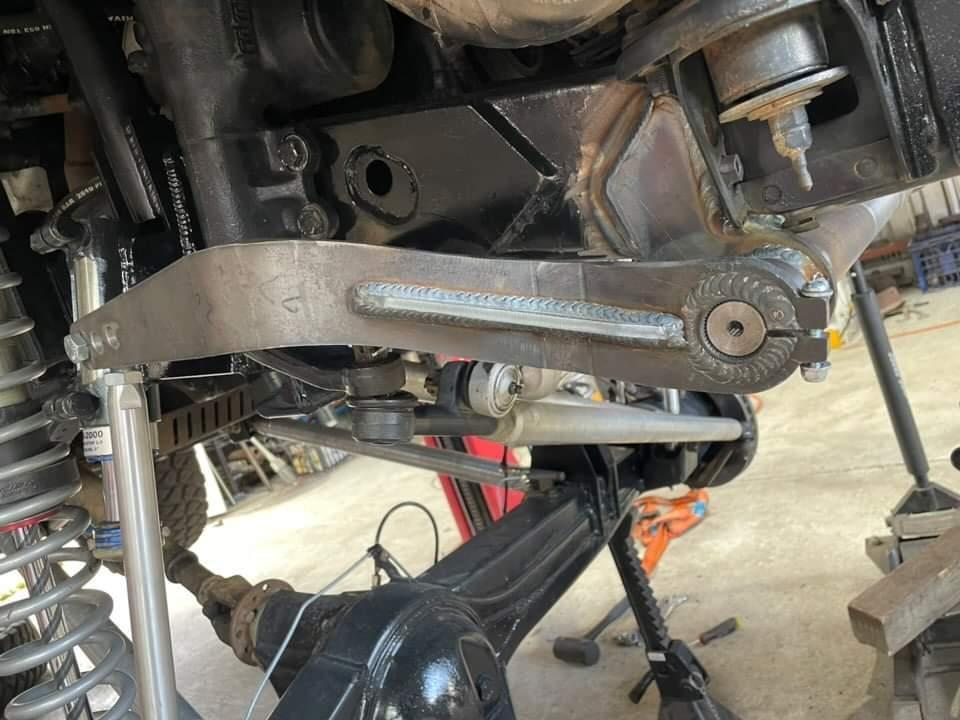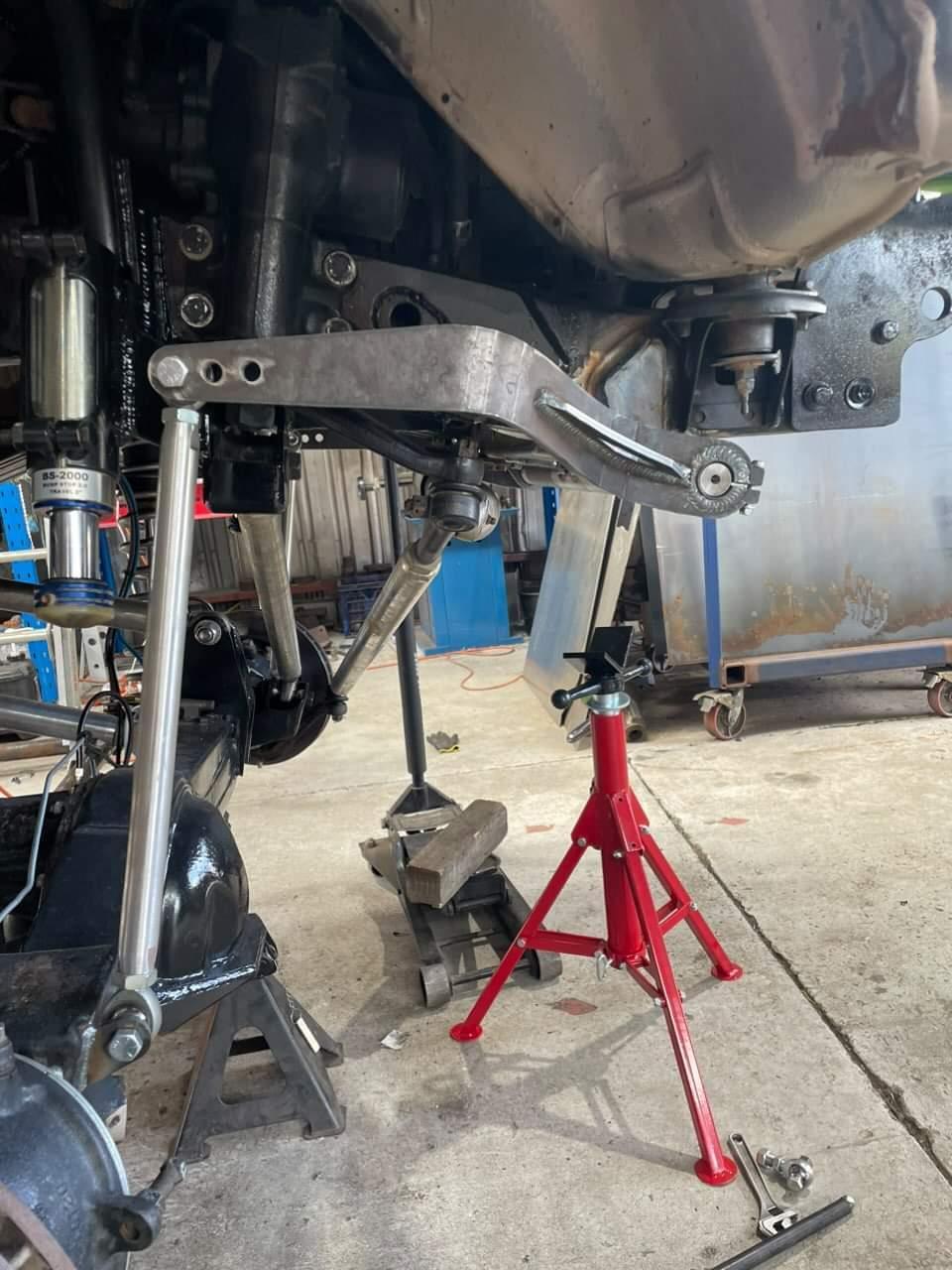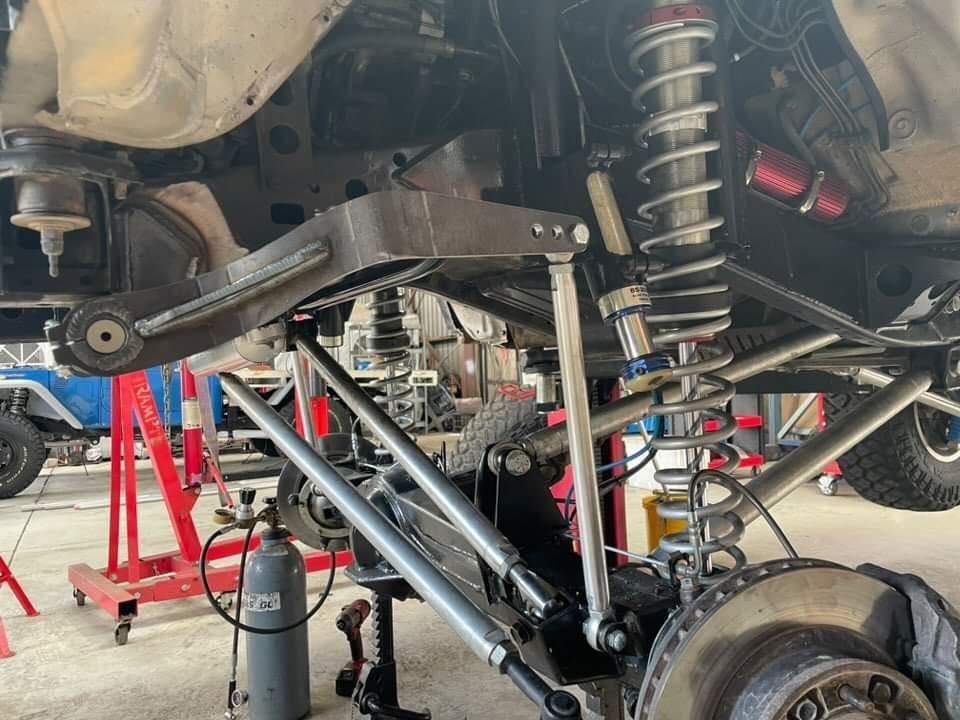I know there's a few guys out there that have installed their own torsion style swaybar, but if you follow Rampt Customs online you'll see he's been working on a prototype kit for the 80 series. If he's able to source the splined pucks, this will be the first ever front swaybar solution offered as a kit. I'm excited to see this come to market as it's a big piece of the puzzle in building a street-worthy linked truck. This will be as easy as you can get, would require minimal welding on the frame (for the mounting plates) and on the axle (for link brackets). He would offer different size links depending on travel. His prototype was on a 3-linked 80 and has no clearance issues whatsoever.
I've talked to him quite a bit about getting these in the US and it should be quite easy to reverse the arms for LHD trucks. He would most likely ship it without the DOM housing tube to keep shipping costs down as those can be sourced here in the states for much cheaper. No ETA yet but hopefully we'll see something in the next few months.




I've talked to him quite a bit about getting these in the US and it should be quite easy to reverse the arms for LHD trucks. He would most likely ship it without the DOM housing tube to keep shipping costs down as those can be sourced here in the states for much cheaper. No ETA yet but hopefully we'll see something in the next few months.




